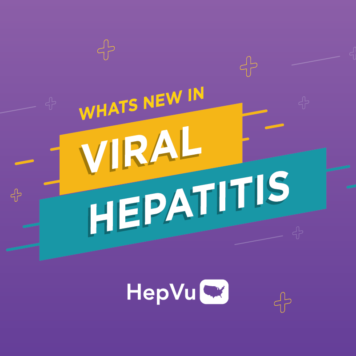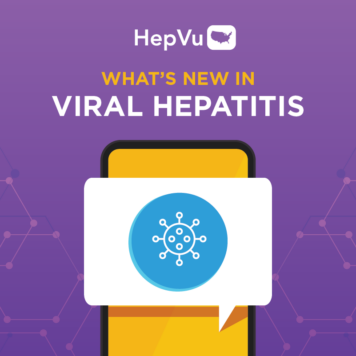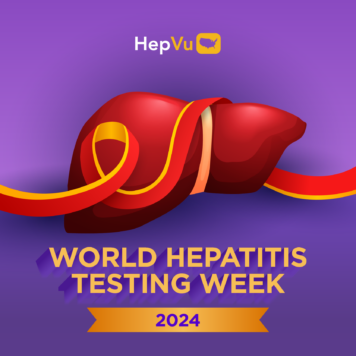Shauna Onofrey, MPH is an Epidemiologist at the Massachusetts Department of Public Health
Q: You have focused on viral hepatitis in roles with the Centers for Disease Control and Prevention (CDC) to the Massachusetts Department of Public Health (MDPH). How have viral hepatitis and the Hepatitis C epidemic in the U.S. evolved during the course of your career?
My role at the CDC as a student was in vaccine-preventable diseases and it wasn’t until I joined the MDPH that I became deeply involved in viral hepatitis. It was a natural fit for me because diseases that impact people struggling with substance use disorders hits close to home. I have had a number of people close to me who have struggled with alcohol or other substance use, and so I feel a very personal connection to the population most impacted by viral hepatitis.
I have worked on viral hepatitis in different roles at MDPH for the last 14 years and much has changed. In particular, the shift in the demographics of prevalent infections and the emergence of HCV infections in new populations, specifically among people who inject drugs, is something that was not well recognized at the beginning of my career. Massachusetts had an important role in shedding light on this connection. Recently, the biggest change has been the availability of curative treatments. In the past, viral hepatitis work was about controlling the spread of the disease and managing the infection. However, the availability of curative treatments has truly transformed the landscape and allowed us to think broadly about treatment as prevention and perhaps, elimination.
Q: You and your colleagues have worked to identify Hepatitis C “hotspots” in Massachusetts. Can you tell us about this approach and how it can help support Hepatitis C elimination efforts?
These efforts have been possible because of engaged partners, both at academic centers and large health care facilities, throughout Massachusetts. Hotspot analysis allowed us to find areas with higher rates of viral hepatitis. By collaborating with a local academic partner, Thomas J. Stopka, Ph.D., MHS, from Tufts University, to analyze the data on cases reported, we evaluated the geographic distribution across the state, which highlighted areas of higher than expected rates of infection. Then, we could focus on the different needs of different areas. In addition to identifying areas of higher burden, we could look at areas with fewer cases being reported and start to investigate if this was truly due to lower disease prevalence or a lack of testing services.
We include maps in our surveillance reports. Partners and community members have utilized maps that we produce to advocate for additional services, such as syringe exchanges, in their area. We believe providing that kind of visualization of cases, even at the rudimentary level, allows for partners and community members to advocate for better services.
Lastly, geographic surveillance supports progress towards Hepatitis C elimination because it is part of a comprehensive approach; surveillance should not be done in a bubble. We think about how geographic data can be utilized for better prevention and for community partners while we’re analyzing it, and then provide the data to those advocating with local stakeholders or lawmakers. That way, we can all work together seamlessly to have informed conversations that may aid in eventual elimination.
Q: People who inject drugs (PWID) experience many barriers to Hepatitis C diagnosis and treatment. Can you provide any best practices from Massachusetts that have helped PWID overcome these barriers?
We have been able to identify best practices due to the broad support we have received for a population-based approach, where we try to think holistically about the health of individuals who happen to inject drugs and co-locate services they need like syringe services, overdose prevention education, substance use disorder treatment, and infectious disease counseling, testing and referral, and vaccination. We’ve integrated many of our services for a long time, such as combining HIV and Hepatitis C testing, and now we have included testing for sexually transmitted infections and tuberculosis services. We’ve made a lot of those services available in locations where people receive additional care, in particular at syringe service providers (SSPs). Changing statutory language around who has authority in a local health jurisdiction to approve a new syringe exchange program has been vital to expanding the number of programs. Not only have we expanded to 33 SSPs in the state, but we have been able to provide full testing services and linkage to care that meets people where they are. Furthermore, for those who are not ready for testing but are regularly coming in for supplies, the providers in those locations can continue having conversations to encourage them to keep returning and reconsider treatment when they are ready. The people working in syringe exchange are my public health heroes because they are helping PWID access whatever care they need, without stigma.
In addition to comprehensive care, the Massachusetts State Public Health Laboratory has recently expanded testing services. Not only are we simultaneously screening for HIV, Hepatitis C, and syphilis, but we are using confirmatory HCV RNA tests. This means we’re not only able to tell people if they were exposed to Hepatitis C, but whether they’re currently infected. This helps our providers fully council the people they have tested and link them to care.
From a policy level, Massachusetts has been fortunate enough to have advocates who pushed for the elimination of health insurance restrictions (e.g., sobriety and stage of disease requirements for Hepatitis C treatment). It has been great that those have been eliminated, but we’re still struggling to make sure everyone is aware that those restrictions are gone – which is why educating providers and those at risk has been key. In particular, we are trying to expand primary care access to HCV treatment and through education, build healthcare environments where people who inject drugs feel welcomed and are treated with respect. There is no reason that people who are actively using cannot get the treatment they need.
Q: In a recent CDC Morbidity and Mortality Weekly Report (MMWR), you described an HIV outbreak among PWID in northeastern Massachusetts, noting that 90 percent of those with HIV infection had evidence of past or current Hepatitis C infection. What does this tell us about the infectious disease consequences of the opioid epidemic?
Since the 2011 MMWR report that linked injection drug use and Hepatitis C, we’ve kept an eye on additional infections. With the influx of fentanyl in Massachusetts, we’re seeing more frequent injecting and therefore more opportunity for infection. Not only are we seeing Hepatitis C, but we’re also seeing HIV, small clusters of Hepatitis B, Hepatitis A, and soft tissue infections such as strep. We know people are continuing to engage in risk behaviors, perhaps due to a lack of knowledge around harm reduction strategies, and consequently, it’s critical for us to continue to offer education and services in addition to using data to understand patient needs.
We are at a key point where different groups are trying to figure out how to best serve individuals who are truly at risk for the infectious disease consequences of the opioid epidemic and overdose and in significant need of public health interventions. The concurrent epidemics are bringing to light the different areas of need. For example, we see a high need for adult vaccination for Hepatitis A and B, whereas younger people may have better coverage. We are seeing the infectious disease consequences of the opioid epidemic in our surveillance data across diseases, and we must identify where the greatest needs are and where we can best target interventions.
Q: What do you believe is most needed to effectively monitor and counteract the Hepatitis C epidemic, both at the state and national level?
We need to increase our investment in expanded surveillance, reducing stigma, and thinking creatively about health programs to monitor and counteract the Hepatitis C epidemic. We need real investment in expanding surveillance, not only for acute Hepatitis C but also for chronic Hepatitis C, because we already know the disease varies from state to state and surveillance capacity also varies. Expanding to include electronic solutions is essential due to the high volume of data reported. We should also examine the utility of limited medical record data. We have been using ESP, which queries electronic medical records, that allows us to obtain additional information on cases directly from the medical record, which we are hoping will increase the completeness of the data that we have on symptoms and demographics, and allow us to better understand other questions, like rates of treatment, which is not easy to estimate through traditional surveillance.
An investment in surveillance solutions will allow us to better estimate prevalence on both local and national levels. providing area estimates, particularly for areas that do not have strong surveillance. I think those estimates do a good job representing the Baby Boomer portion of the epidemic, and the geographic variation in Hepatitis C for that population. However, we’re still falling short on understanding where new cases are emerging and where the opioid epidemic is playing a big role. For Massachusetts, those estimates are a significant undercount compared to the cases we see through surveillance. We have a lot of data but thinking creatively about how to link data from different, siloed programs will allow us to improve public health. Stronger prevalence estimates are necessary as we embark on elimination, and more localized estimates will allow us to better evaluate interventions that are necessary to move toward elimination, such as treatment as prevention.
Lastly, it’s important that we reduce stigma across the health care system for PWID because that’s a serious barrier to getting people into care and treatment. Even in Massachusetts, where we have lifted those restrictions, people still encounter stigma, and we’re not going to be able to eliminate this disease unless we reduce the stigma.



